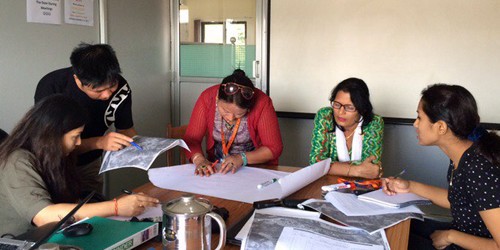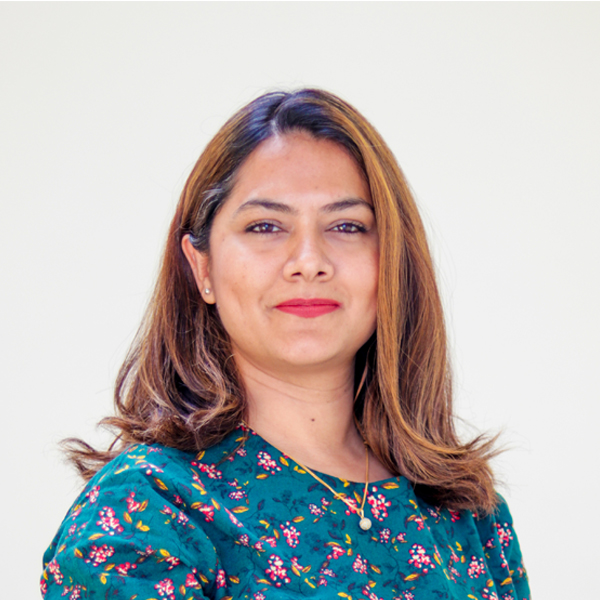Introduction
This is a multi-country and multi-method study that aims to test the feasibility, cost and appropriateness of three novel survey and visualisation methods (WorldPop data, gridded sampling and OpenStreeMap). The focus of the project is on two neglected non-communicable diseases (NCDs) namely mental ill-health and injuries. The purpose of using these novel techniques is to appropriately represent all wealth groups in urban areas, and allowing planners to see an unbiased picture of distributions of NCDs, which they can use for equitable planning and monitoring in urban areas.
We will also identify and test questions to assess mental ill-health and injuries – and develop urban-appropriate definitions of a household and measures of wealth. We will work with municipal governments to improve – with the use of the visualization tool – the use of resultant survey data in urban planning.
Study countries: Nepal, Bangladesh and Vietnam
Research team: Funding agency is University of Leeds to HERD International. The core team includes research partners from South Asia and United Kingdom academics (University of Leeds and University of Southampton), a wider team of advisors, and plans to extend the current partnership to include global experts on surveys and using data within health systems.
Project Objectives
1) Establish and strengthen collaborations with health research institutions, international and national bodies conducting cross-sectional household surveys, national and local government departments and academics to share expertise and build capabilities on survey design, assessment of wealth, mental health and injuries, data visualization and use of data to address urban inequities.
2) Adapt, in close collaboration with decision-makers in Bangladesh, Nepal and Vietnam, existing surveys to enhance understanding of mental health and injuries among urban populations: by:
a) Assessing the literature and existing questionnaires to measure mental ill-health and injury;
b) Understand perceptions, experiences and terminology of mental health and injury in slums;
c) Agree a questionnaire using questions from existing surveys adapted for urban appropriateness;
d) Assess comprehensibility and acceptability of the agreed questionnaire among urban slum residents and identify the best mode of delivery;
3) Identify appropriate measures of urban wealth for use within household surveys;
4) Assess the extent and nature of data use in planning and management processes and practices within municipalities, including key influences on the degree of data use;
5) Engage closely with municipalities to develop appropriate and feasible data visualization tools to support planning and management;
6) Pilot our novel sampling, mapping, enumeration and visualization methods.
Methodology
Methodology that we employed is a mixed method study, both qualitative and quantitative approaches to collect and analyze data. The following methods are as follows:
- Participatory methods with the urban poor: This method is a combination of approaches, tools, attitudes and behaviors that allow local participants to take an active role in the production of knowledge.
- Data for decision making: It covers information to be collected through in-depths interviews, non-participant observations and document reviews related to urban health planning.
- Survey methods: Gridsample, openstreetmap: Gridsample helps to use pre-loaded datasets to generate primary sample units (PSUs) also called clusters for the survey. Openstreetmap allows us to visualize PSU boundaries and allow easy editing of road lines and building areas from a desktop computer.
- Communities of practice: this method helps to see how the community people and decision makers identify appropriate ways of visualizing data and use data in the planning process.
- Focus group discussion with enumerators: is a method to identify any issues and challenges that the interviewers face identifying households and individuals to answer the questionnaires and any challenges with the questions within the questionnaire.
Project Focal person
This project’s focal person is Ms. Shophika Regmi
Associated Team Members
Shophika Regmi
Senior Manager: Health System Research, Evaluation and LearningShophika Regmi
Senior Manager: Health System Research, Evaluation and LearningMs. Shophika Regmi has been working in health and social research for more than a decade. Throughout this period, she has led research projects of various natures and scales, particularly in the health sector. She possesses extensive experiences in implementation research using participatory action approaches, designing and executing evaluation studies, national level surveillance study, and large-scale survey across diverse areas such as health system strengthening, urban health, health workforce, non-communicable disease, nutrition, maternal health, etc. With a profound interest in [...]
Learn moreProject Location
Similar Projects
Background Menstrual hygiene management (MNH) challenges faced by girls in low-income countries are receiving increasing attention as ...
Background In line with the constitution of Nepal (2007) which enshrined health as the basic right of citizens, the Government of ...
Shifting tasks to mid-level health workers has been recommended as an effective strategy to provide care in rural and remote areas ...
Background The project was conducted in coordination with Save the Children, American Red Cross and NSET. The project was conducted to ...
INSPIRE2CARE PROGRAM – A comprehensive study of household, health facility and disability assessment
Background Good health and wellbeing is one of the key component for sustainable development. Due to concerted efforts from government ...
Background The WHO Violence and Injury Prevention Programme and the Global Alliance for Clean Cookstoves funded this pilot field test ...
Background HERD International undertook this study to assess the interventions of Karuna Foundation Nepal which focused on Education, ...
Background Menstrual hygiene management (MNH) challenges faced by girls in low-income countries are receiving increasing attention as ...
Central Bureau of Statistics (CBS), on behalf of Ministry of Federal Affairs and Local Development (MoFALD) and Ministry of Urban ...



